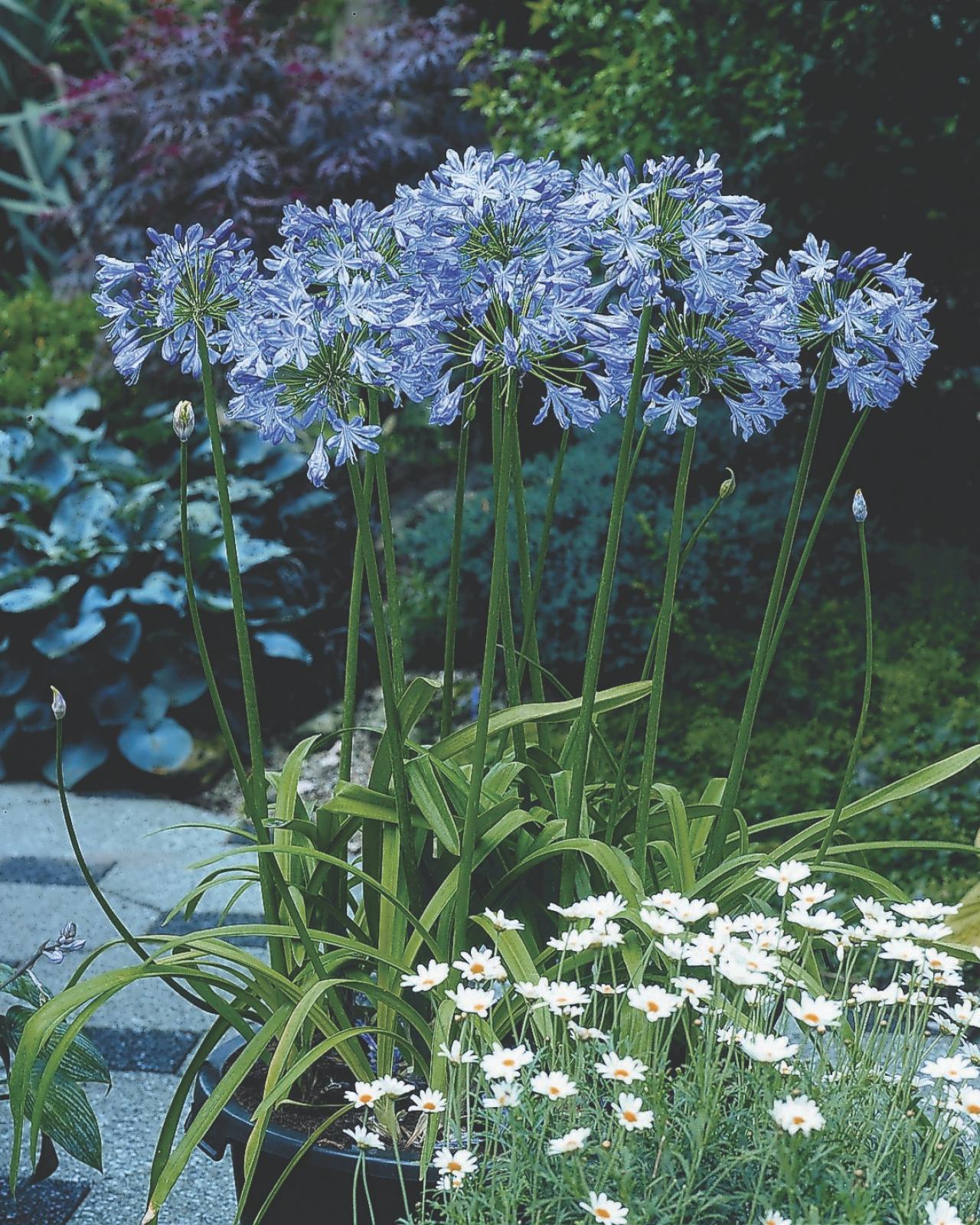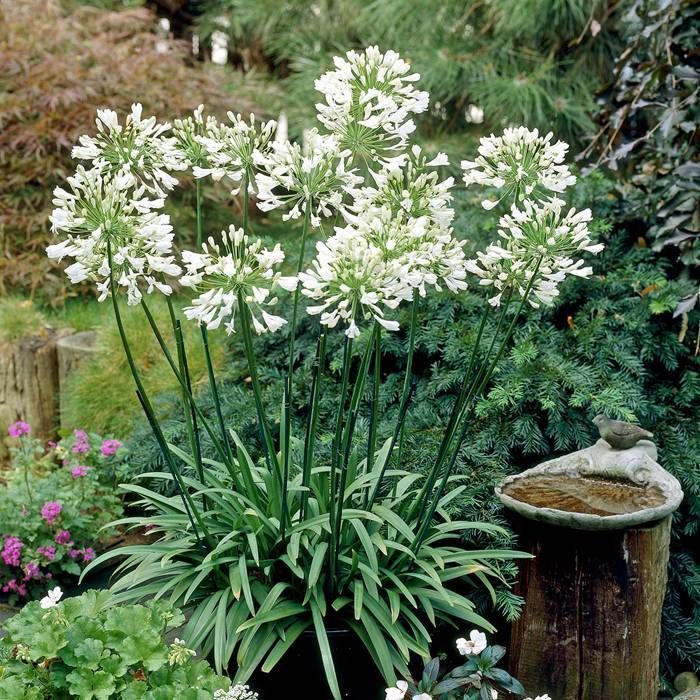Letting Loose the Secret to Effective Agapanthus Cultivation: Tips and Techniques for a Flourishing Yard
In the world of horticulture, growing agapanthus efficiently requires a calculated method that encompasses various elements of plant care. By understanding the nuances of agapanthus farming, one can produce an environment where these plants grow and grow generously.
Planting Agapanthus: Ideal Practices
When planting Agapanthus, correct dirt prep work is crucial for making certain successful growth and growth of these lovely blossoms. Agapanthus, generally referred to as Lily of the Nile or African lily, thrives in well-draining soil with a slightly acidic to neutral pH level - Agapanthus. Before growing, it is critical to modify heavy clay soils with natural issue such as garden compost or peat moss to boost drain and offer vital nutrients for the plants
To grow Agapanthus, pick an area that receives full sunshine to partial color, as this will promote healthy and balanced growth and bountiful blooming. Dig an opening twice the size of the plant's origin round and put the Agapanthus at the exact same depth it was previously expanding. Carefully backfill the opening with soil, weighing down securely to get rid of any type of air pockets around the origins.
Water the newly planted Agapanthus extensively and remain to maintain the dirt equally wet, particularly during the plant's active growing period. Agapanthus. Applying a well balanced fertilizer once a month can further sustain the plant's development and flowering. By following these ideal methods for planting Agapanthus, you can produce a spectacular display screen of these captivating blossoms in your yard
Suitable Soil Issues for Agapanthus
For optimum growth and blooming success of Agapanthus plants, making certain the dirt conditions are optimal is vital. Agapanthus likes soil that is rich in nutrients, so including a balanced plant food during the growing season can promote healthy development and vivid blooms.

Watering and Fertilizing Tips
To guarantee healthy and balanced growth and vibrant blossoms, appropriate watering and feeding techniques are crucial for successful Agapanthus cultivation. Agapanthus plants benefit from regular watering, especially throughout the expanding season.
When it comes to feeding Agapanthus, a well balanced fertilizer with equal parts nitrogen, phosphorus, and potassium can be used in the springtime to advertise healthy growth and blooming. Slow-release fertilizers are suitable for supplying nutrients gradually over an extended duration. Stay clear of over-fertilizing, as this can lead to too much vegetation development at the cost of flowers.
In addition, integrating natural issue like garden compost right into the dirt can boost nutrient levels and boost soil framework, helping in the total health of the Agapanthus plants. By adhering to these watering and fertilizing suggestions, garden enthusiasts can guarantee their Agapanthus plants thrive and produce sensational screens of blossoms.
Pruning and Deadheading Strategies
Correct trimming and deadheading strategies play a vital function in maintaining the health and wellness and aesthetic appeals of Agapanthus plants, complementing the essential techniques of watering and feeding for successful farming. Pruning Agapanthus involves eliminating spent flower heads, yellowing or dead fallen leaves, and total shaping of the plant to advertise far better development. Deadheading, the procedure of getting rid of discolored flowers, not just boosts the plant's appearance but also urges additional blooming.
When deadheading Agapanthus, it is advisable to snip off the flower stem at the base making go to my site use of sharp, clean shears. This process reroutes the plant's power from seed manufacturing back right into root and vegetation growth, advertising a much healthier and much more robust plant. Regular deadheading can prolong the flowering duration of Agapanthus and stop self-seeding, which can bring about overcrowding.
In terms of trimming, Agapanthus generally advantages from a light trim after flowering to clean up the plant and motivate fresh development. Reducing the spent blossom stems and getting rid of any broken or dead vegetation helps keep the plant's vitality and total look. However, it is important to avoid cutting right into the crown of the plant, as this can weaken its wellness.

Protecting Agapanthus From Pests and Diseases
Carrying out reliable bug and condition administration methods is vital to securing the wellness and vitality Learn More of Agapanthus plants in farming. One common insect that impacts Agapanthus is the Agapanthus borer, a caterpillar that passages into the plant, causing damage to the blossoms and fallen leaves.
Along with parasites, Agapanthus are at risk to conditions such as origin rot and fungal fallen leave spots. These concerns can often be prevented by making sure correct drain and avoiding overwatering. If signs of disease show up, influenced parts of the plant need to be immediately gotten rid of to stop additional spread. Fungicides might likewise be used as a treatment procedure, complying with the producer's directions carefully. By remaining vigilant and addressing insect and condition concerns quickly, gardeners can assist their Agapanthus prosper and flourish.

Verdict
In verdict, successful growing of agapanthus requires proper planting strategies, optimal dirt problems, sufficient watering and fertilizing, routine pruning and deadheading, and security from conditions and insects. By following these techniques and suggestions, garden enthusiasts learn this here now can guarantee a prospering yard loaded with stunning agapanthus flowers. Agapanthus. Bear in mind to keep consistent treatment and focus to information to promote the wellness and longevity of these magnificent plants
When growing Agapanthus, proper soil preparation is vital for guaranteeing effective growth and development of these lovely flowers.Water the recently grown Agapanthus extensively and continue to maintain the dirt equally wet, particularly throughout the plant's active expanding period.For optimum development and flowering success of Agapanthus plants, making certain the dirt problems are excellent is important. When hair transplanting or planting Agapanthus, make certain the soil is well-prepared to provide the required structure for the plants to develop themselves efficiently. One usual bug that affects Agapanthus is the Agapanthus borer, a caterpillar that passages into the plant, creating damage to the blossoms and fallen leaves.
Comments on “Sensational Agapanthus: Enhancing Your Garden's Appeal”